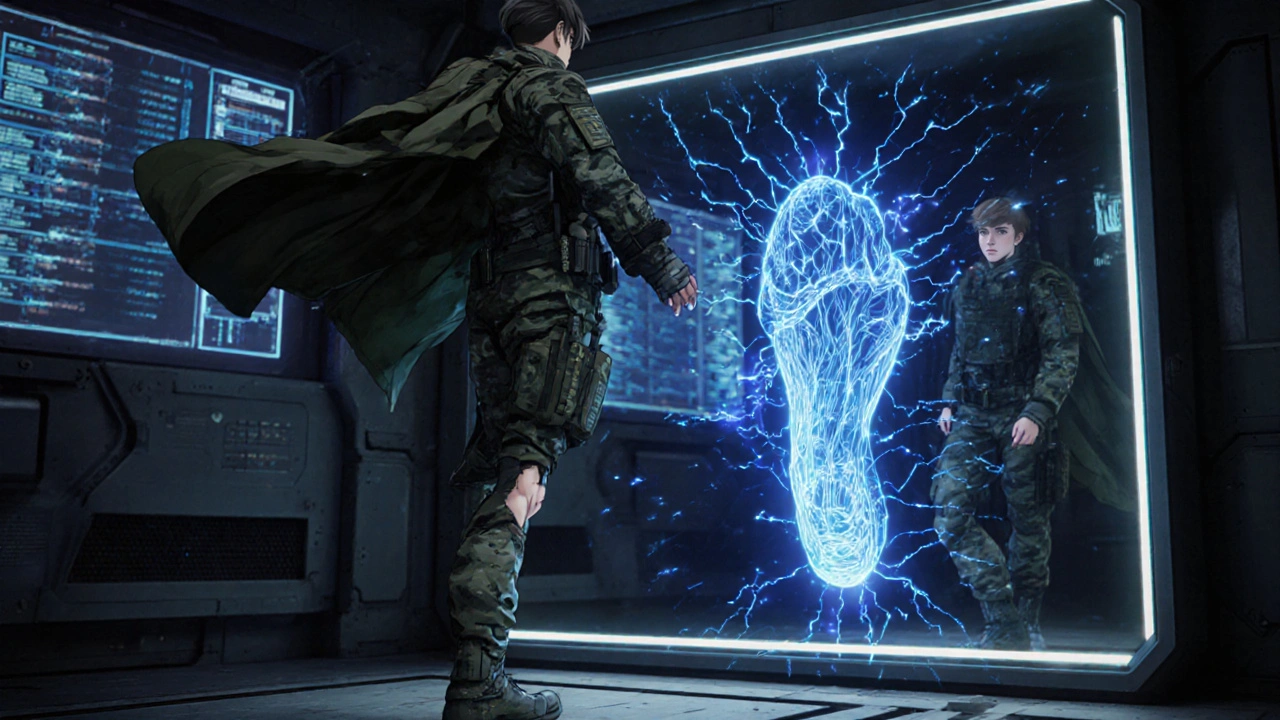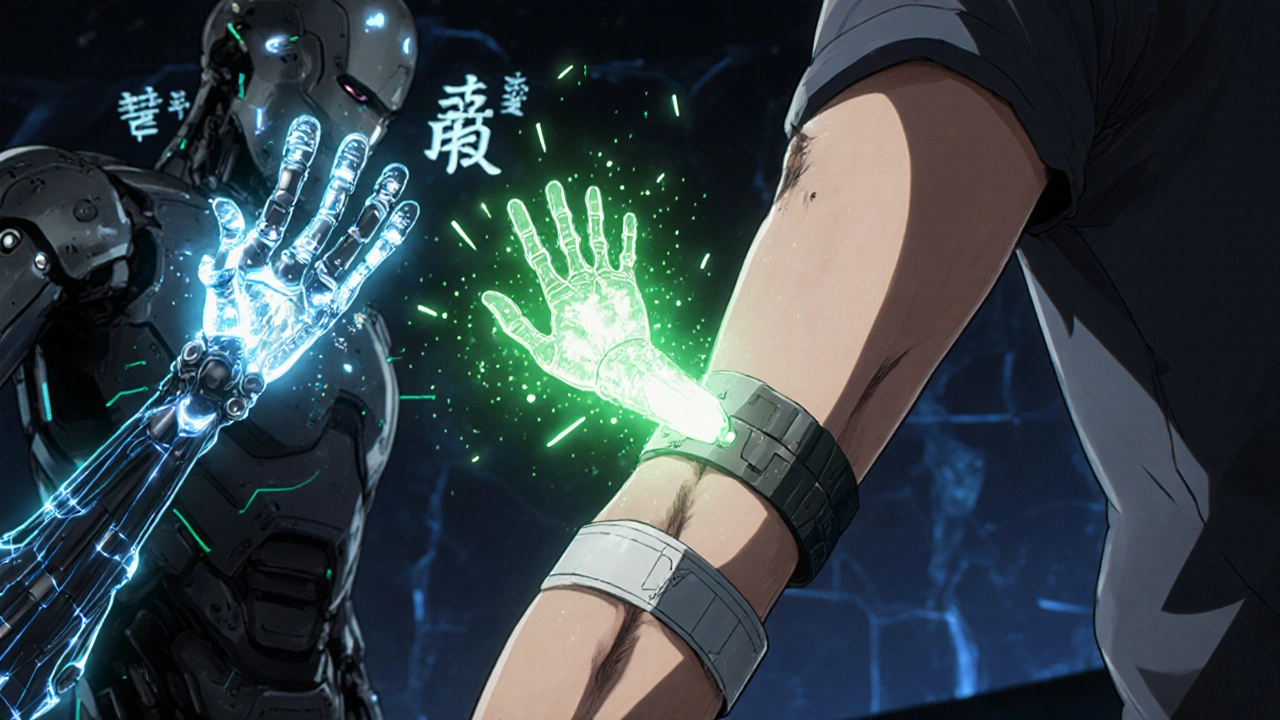Phantom Limb Pain: How Mirror Therapy and Medications Help Manage Chronic Pain After Amputation
 Nov, 9 2025
Nov, 9 2025
What Is Phantom Limb Pain?
Phantom limb pain isn’t in your head-it’s in your brain. Even after a leg, arm, or finger is gone, your nervous system keeps sending pain signals as if the limb were still there. You might feel burning, stabbing, cramping, or tingling in a part of your body that no longer exists. This isn’t imagination. Brain scans show real activity in the areas that once controlled the missing limb. About 60% to 85% of amputees experience this, and for many, it doesn’t go away on its own.
It usually starts within days or weeks after surgery, but if it lasts more than six months, the chance of it fading without treatment is slim. The pain often feels like it’s coming from the far end of the missing limb-like toes or fingers-even though there’s nothing there. Some people describe it as their foot being stuck in a tight shoe or their hand clenched into a fist they can’t open.
Why Does It Happen?
When a limb is amputated, the nerves that used to carry signals from that limb to the brain don’t just disappear. They get damaged, misfire, and send chaotic signals. Over time, the brain rewires itself. Areas that used to receive input from the missing limb start responding to signals from nearby body parts-like the face or chest. So when you touch your cheek, you might feel pain in your missing hand. This is called cortical remapping.
Before surgery, if you already had chronic pain in that limb, your risk of phantom pain goes up. So does the risk if the amputation was due to a tumor or if you had severe pain on the day of surgery. Stress, fatigue, cold weather, pressure on the stump, or even an ill-fitting prosthetic can make it worse. It’s not just about the missing limb-it’s about how your nervous system adapts after trauma.
Medications: What Actually Works?
Doctors usually start with medications that were originally designed for other conditions but have proven effective for nerve pain. The most common are tricyclic antidepressants like amitriptyline and nortriptyline. These aren’t for depression in this case-they work by calming overactive nerves. A typical dose starts at 10 mg at bedtime and slowly increases over weeks. About 45% of patients report moderate relief, but side effects like drowsiness, dry mouth, and weight gain make some people stop.
Anticonvulsants like gabapentin and pregabalin are next in line. Gabapentin often starts at 300 mg a day and can go up to 3,600 mg. Many users find it helpful, especially at higher doses, but dizziness and brain fog are common complaints. Pregabalin works faster but can cause swelling and weight gain in up to 40% of users.
For mild pain, over-the-counter NSAIDs like ibuprofen or naproxen help some people at first. But for most, their effect fades after a few months. Opioids like oxycodone or morphine are sometimes used for severe cases, but they come with big risks: dependence, tolerance, and addiction. Experts now recommend keeping opioid doses below 50 morphine milligram equivalents per day.
For stubborn cases, doctors may turn to ketamine-an NMDA receptor blocker given intravenously in low doses. It can break the pain cycle, but it’s not for long-term use. Botulinum toxin (Botox) injections into the stump have also helped some patients, cutting pain by more than half in case studies.

Mirror Therapy: Seeing Is Believing
Mirror therapy is one of the most surprising and effective non-drug treatments. You sit in front of a mirror with your intact limb on one side and your stump on the other. The mirror hides the stump and reflects the image of your healthy limb, making it look like you have two limbs. Then you move the healthy limb slowly-wiggling fingers, rotating the ankle-while watching its reflection. Your brain sees movement where it expects it, and over time, the mismatch between what you feel and what you see starts to quiet the pain signals.
It sounds simple, but it’s backed by science. Dr. V.S. Ramachandran’s early work showed that this visual feedback can reverse some of the brain’s rewiring. Patients do 15 to 30 minutes a day, five to seven days a week. Some see results in a few weeks. Others take months. The big problem? Sticking with it. About 40% of people quit within eight weeks because it feels awkward or they don’t see quick results.
Now, virtual reality is starting to replace mirrors. Instead of a physical box, patients wear a headset that shows a digital version of their missing limb moving in sync with their healthy one. Early studies suggest this could improve adherence and make the therapy more immersive.
Other Non-Medication Options
Not everyone responds to drugs or mirrors. That’s where other tools come in.
- TENS (Transcutaneous Electrical Nerve Stimulation): Electrodes on the stump deliver mild electric pulses. It doesn’t work for everyone, but about 30-50% of users get some relief. It’s safe, cheap, and easy to use at home.
- Spinal Cord Stimulation: For severe, long-term cases, a small device is implanted near the spine. It sends gentle pulses that block pain signals. Success rates are 40-60%, and newer closed-loop systems like Saluda Medical’s Evoke (FDA-approved in early 2024) adjust automatically based on your pain levels.
- Biofeedback: You learn to control your body’s responses-like muscle tension or heart rate-using sensors and a screen. About 25-40% of patients see improvement with consistent training.
- Targeted Muscle Reinnervation (TMR): This surgery redirects nerves from the amputated limb to other muscles. When you think about moving your missing hand, the new muscle contracts, and sensors pick up the signal to control a prosthetic. In 2024, studies showed this combined with osseointegration reduced phantom pain by 70% in some patients.

What Doesn’t Work (And Why)
Some treatments sound promising but don’t hold up. Epidural anesthesia during amputation was once thought to prevent phantom pain, but recent reviews show it doesn’t. Hypnosis and acupuncture have mixed results and aren’t reliably effective. And while many people try herbal supplements or CBD, there’s no strong evidence they help with phantom pain specifically.
The biggest mistake? Waiting too long. The longer you wait to treat phantom pain, the more entrenched the brain patterns become. Early intervention-within the first three months-is your best shot at stopping it from becoming chronic.
Living With Phantom Limb Pain
Managing this pain isn’t about one magic fix. Most people need a mix of treatments. A 50-year-old woman might use gabapentin, do mirror therapy daily, and get TENS therapy twice a week. A veteran might combine spinal stimulation with peer support. Success comes from persistence and finding the right combo.
Support matters too. The Amputee Coalition connects over 12,000 people each year. Talking to others who’ve been there helps reduce isolation. Online forums like Reddit’s r/amputee show real stories: 72% of users found gabapentin helpful, but 58% stopped because of side effects. One man said Botox gave him 12 weeks of near-zero pain. Another said mirror therapy took three months before he felt any change-but then it changed his life.
There’s no shame in needing meds. There’s no weakness in trying a mirror. The goal isn’t to eliminate every twinge-it’s to get back to living. To sleep through the night. To walk without flinching. To stop dreading the next flare-up.
What’s Next?
Research is moving fast. New NMDA blockers are in Phase II trials, aiming to give ketamine’s benefits without the side effects. Wearable neurostimulators are getting smaller and smarter. Virtual reality mirror therapy could become mainstream by 2027, with adherence rates expected to jump from 60% to 85%.
By 2030, experts predict a 40% drop in chronic phantom limb pain cases-not because of one breakthrough, but because more people will get early, combined care: meds + movement + mind. The future isn’t just about silencing pain. It’s about retraining the brain to stop believing it’s there.
Can phantom limb pain go away on its own?
It can, but only in a small number of cases. If the pain lasts more than six months, the chance of it disappearing without treatment is very low. Most people need active intervention-medication, therapy, or both-to get relief.
Is mirror therapy effective for everyone?
No, but it works for many. Studies show about 50-70% of people who stick with it for at least four weeks see some improvement. Success depends on consistency, how soon you start, and whether you combine it with other treatments. Some people need virtual reality versions to stay engaged.
Why do doctors prescribe antidepressants for pain?
Tricyclic antidepressants like amitriptyline don’t treat depression in this case-they affect nerve signaling. They slow down the overactive pain messages traveling from the spinal cord to the brain. They’re not addictive and are often more effective for nerve pain than regular painkillers.
Are opioids safe for long-term phantom pain?
Opioids are not recommended for long-term use. They carry high risks of dependence, tolerance, and overdose. Experts suggest using them only for short-term, severe pain when other options fail, and always under strict supervision. The American Pain Society recommends keeping daily doses under 50 morphine milligram equivalents.
How soon should I start treatment after amputation?
Start as early as possible. The first three months are critical. Early use of medications like gabapentin or mirror therapy can prevent pain signals from becoming deeply wired into your brain. Waiting six months or longer makes treatment much harder.
Can I use mirror therapy at home?
Yes. All you need is a mirror box or even a regular mirror placed on a table. Position your intact limb in front of the mirror and your stump behind it. Move the intact limb slowly while watching its reflection. Do it for 15-30 minutes daily. Many people do it without professional help, though a physical therapist can help you get started right.
What’s the difference between phantom pain and stump pain?
Phantom pain feels like it’s coming from the missing limb-like toes or fingers. Stump pain is actual pain at the amputation site, often caused by nerve damage, infection, or scar tissue. They can happen together, but they need different treatments. Stump pain might respond to surgery or injections; phantom pain needs brain-focused therapies like mirror therapy or nerve-modulating drugs.
Jim Oliver
November 9, 2025 AT 13:55William Priest
November 10, 2025 AT 15:46Ryan Masuga
November 11, 2025 AT 14:44Jennifer Bedrosian
November 13, 2025 AT 14:24Lashonda Rene
November 14, 2025 AT 09:36Andy Slack
November 15, 2025 AT 21:52Rashmi Mohapatra
November 17, 2025 AT 00:30Abigail Chrisma
November 17, 2025 AT 10:48Ankit Yadav
November 18, 2025 AT 05:43Meghan Rose
November 19, 2025 AT 11:28Steve Phillips
November 20, 2025 AT 03:32Rachel Puno
November 22, 2025 AT 03:10Clyde Verdin Jr
November 22, 2025 AT 07:15Key Davis
November 24, 2025 AT 03:31Brad Seymour
November 24, 2025 AT 13:12